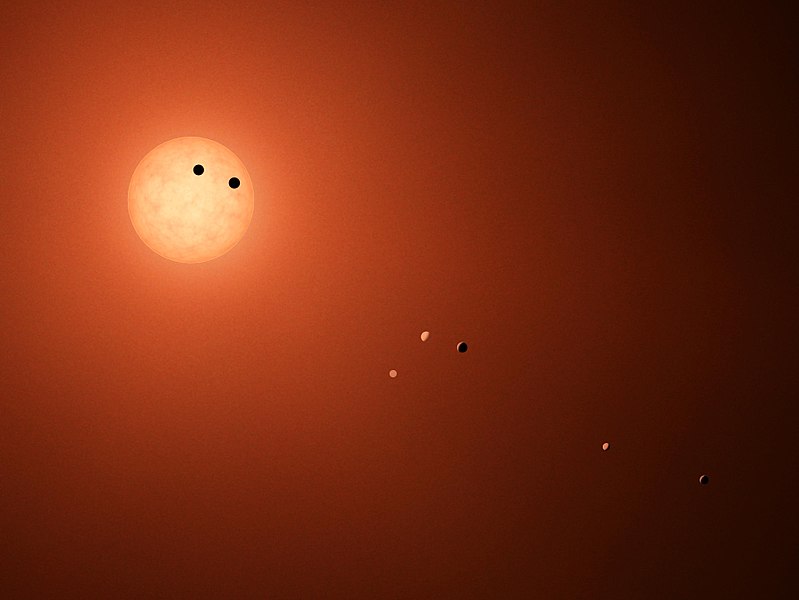Ficheiro:PIA21429 - Transit Illustration of TRAPPIST-1 (cropped).jpg

Tamaño desta vista previa: 799 × 600 píxeles. Outras resolucións: 320 × 240 píxeles | 640 × 480 píxeles | 1.023 × 768 píxeles | 1.280 × 961 píxeles | 2.560 × 1.921 píxeles | 3.600 × 2.702 píxeles.
Ficheiro orixinal (3.600 × 2.702 píxeles; tamaño do ficheiro: 362 kB; tipo MIME: image/jpeg)
Historial do ficheiro
Prema nunha data/hora para ver o ficheiro tal e como estaba nese momento.
| Data/Hora | Miniatura | Dimensións | Usuario | Comentario | |
|---|---|---|---|---|---|
| actual | 13 de marzo de 2017 ás 06:31 |  | 3.600 × 2.702 (362 kB) | Huntster | File:PIA21429 - Transit Illustration of TRAPPIST-1.jpg cropped 40 % vertically using CropTool with lossless mode. |
Uso do ficheiro
A seguinte páxina usa este ficheiro:
Uso global do ficheiro
Os seguintes wikis empregan esta imaxe:
- Uso en en.wikipedia.org
- Uso en fi.wikibooks.org
- Uso en is.wikipedia.org
- Uso en ru.wikipedia.org



